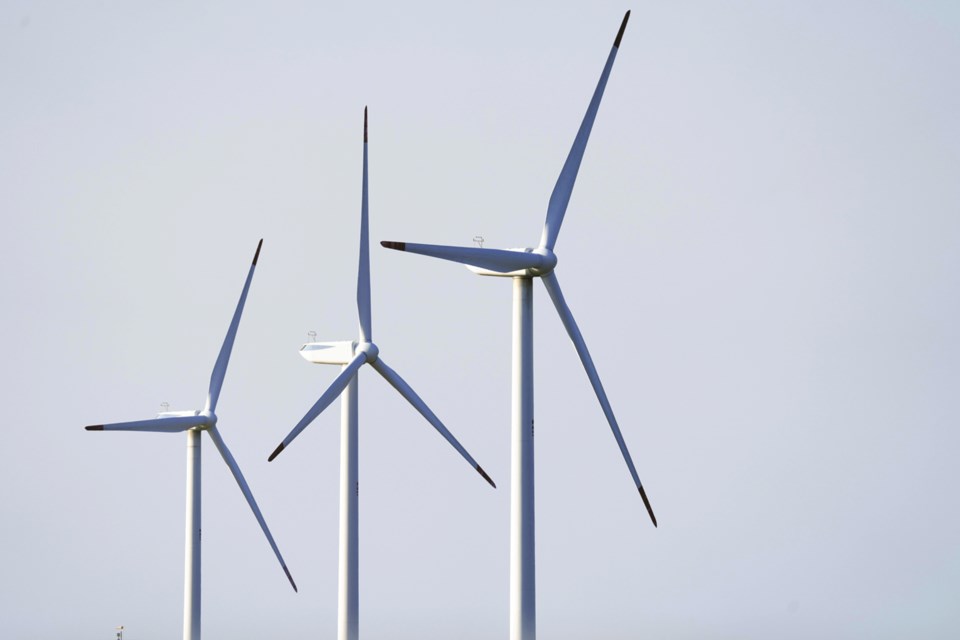ST. PAUL – During a public hearing at the County of St. Paul’s regular council meeting on Feb. 13, residents spoke against the County’s proposed amendment to its Land Use Bylaw (LUB), particularly regarding wind turbines.
The section of the LUB that specifically refers to wind turbines is “Section 7.35 Commercial Alternate Energy Development.” Around 30 residents from the Elk Point area attended the public hearing.
Members of Wind Concerns, a group composed of Elk Point area residents, were also present. Group members had spoken against Elemental Energy’s proposed Northern Valley Wind Project during a Jan. 30 Public Works meeting and suggested changes to the County’s LUB.
RELATED: Group urges County of St. Paul to pass bylaws regarding wind turbines
Several residents provided short presentations about why they were against the proposed amendments to the LUB, many expressing concerns on the potential negative outcomes of a wind turbine’s close proximity to human life, as well as effects on the environment, properties, and land.
Setbacks
Among those who spoke up included Mark Mallett. His concerns include subsection 29 of Section 7.35.
Under subsection 29, the setback distance between a dwelling and wind turbines, also known as a WECS (Wind energy conversion system) in the LUB, would be “established by the Alberta Utilities Commission through the calculations of the AUC Rule 12.”
Mallett said that with this section, the County is “basically saying... ‘we’re going to leave it to the AUC’.”
Mallett reiterated a suggestion that the County amend the subsection to state the municipality shall determine the setback distance of WECS from a dwelling.
Subsection 30
Mallett also referred to section 7.35, subsection 30, where the LUB states that WECS’ towers “shall be setback from the boundary of all County Road rights of way (developed or undeveloped), a minimum distance equal to the total height of the tower plus 10 per cent.”
The proposed amendment that the minimum distance would be equal to the tower’s total height, but not less than one blade length, plus 10 per cent of the tower’s height.
Mallett does not believe this is enough, stating there are reports that wind turbines’ debris can fall as far away as 600 meters. He proposed the minimum distance be of 10 blade lengths.
Subsection 31
Mallett also addressed subsection 31 of section 7.35, stating that WECS shall be set back not less than 24.6 feet from other property lines. The proposed amendment is that WECS shall be set back not less than “one blade length” plus the 24.6 feet from all other property lines.
Mallett proposed a 15 km set back, stating there are studies showing that a safe distance of WECS from humans is at least 15 km.
Mallett also asked County of St. Paul Reeve Glen Ockerman, “the rationalization” behind the County’s proposed amendments.
Ockerman said the County is following the process for LUB amendments, and part of that process includes the public hearing that just occurred. “We have input, that’s what this council needs, and I’m glad to see the public coming out,” said Ockerman.
Northern Valley Wind Project Update
Lakeland This Week asked the AUC if it considers municipal bylaws when approving or denying a project.
In a statement provided, Geoff Scotton, senior communications advisor with the AUC, said every project application of proposed facilities development, the AUC considers “all information and evidence brought before it, including that brought by municipalities.”
AUC encourages municipal input to ensure the AUC is well informed with local perspectives and preferences.
When an application for the Elk Point Northern Valley Wind Project is received, AUC will also provide a notice of application that will be distributed to local residents, landowners, and municipalities.
This invites the public to voice concerns or support for the project and provides information on how they can be involved with the AUC process, helping decide the outcome of the application.
“In order for the project to be approved, the AUC must determine the proposed project is [in] the public interest, with a particular focus on environmental, social and economic considerations,” according to Scotton.



